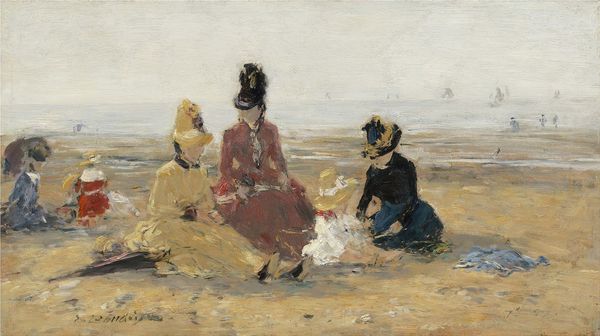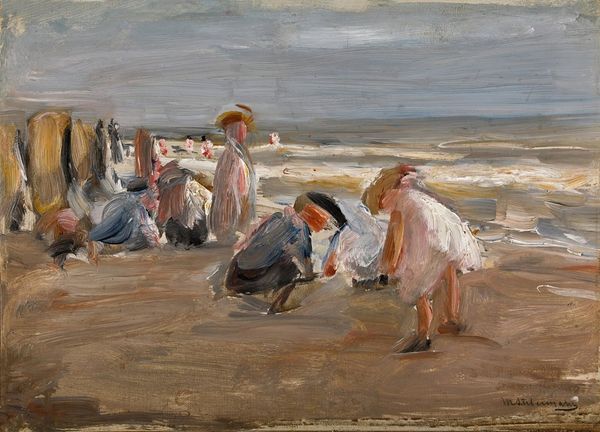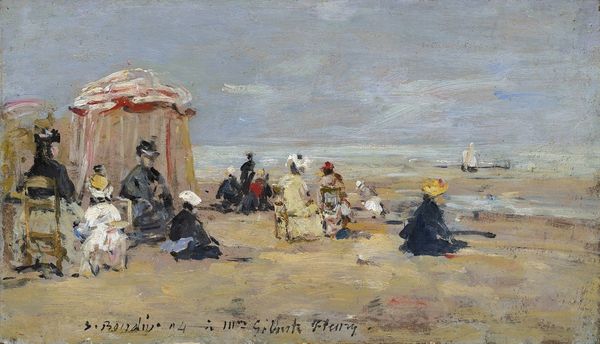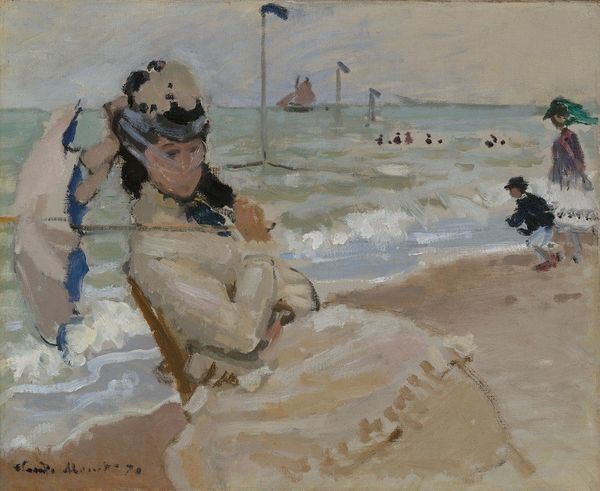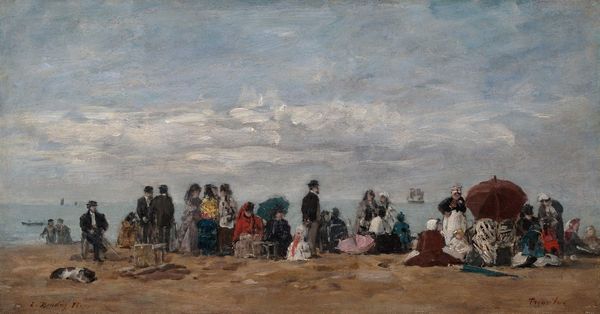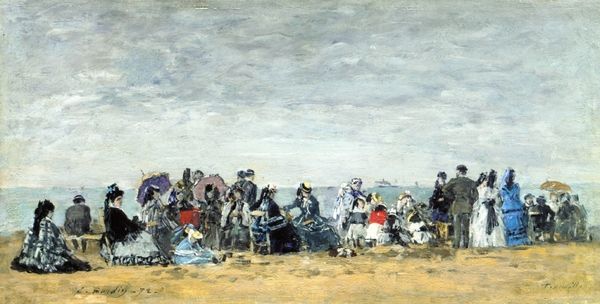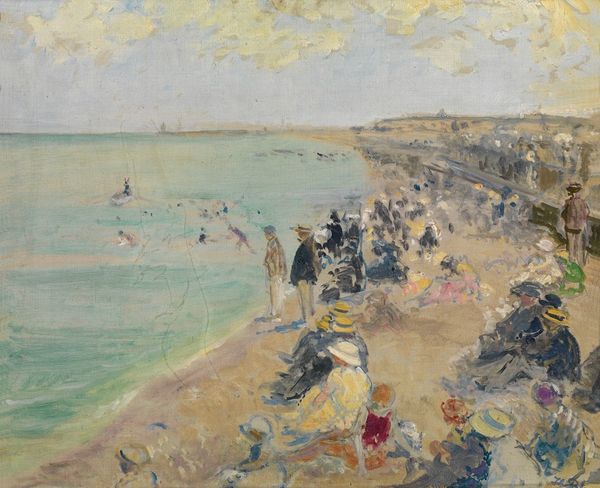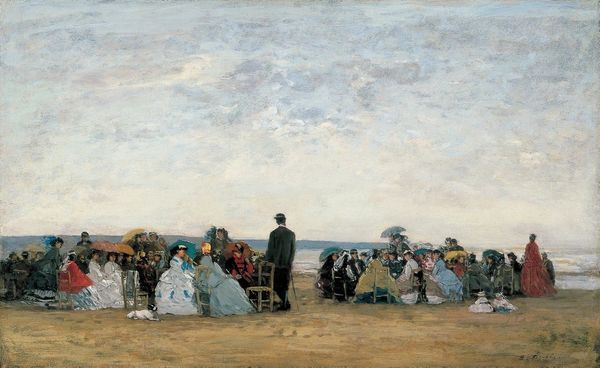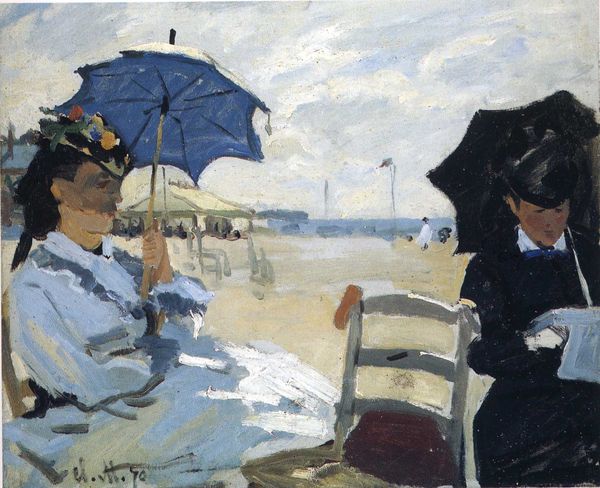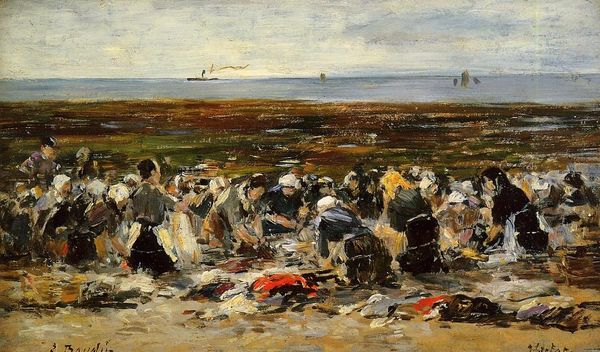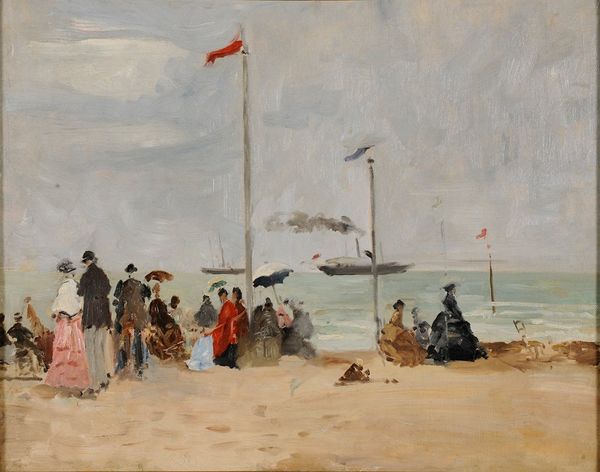
painting, plein-air, oil-paint
#
figurative
#
painting
#
impressionism
#
plein-air
#
oil-paint
#
landscape
#
painted
#
figuration
#
oil painting
#
genre-painting
Copyright: Public Domain: Artvee
Curator: "Scène De Plage," painted by Eugène Boudin between 1883 and 1887, offers us a glimpse into a leisurely seaside moment. Editor: It feels quite muted at first glance. The color palette is so subtle, almost monochromatic, dominated by these sandy beige tones and hazy blues. The figures seem secondary to the overall atmosphere. Curator: The figures are central, I think. Boudin was fascinated by rendering contemporary life. Look at their attire – they’re definitely members of the burgeoning middle class, enjoying newly accessible leisure time at the beach. This connects directly to France's economic and social shifts in the late 19th century and a greater celebration of everyday life in art. Editor: You’re right about the social context. It is worth remembering how radical this was, in relation to Academic Painting, or even paintings celebrating work! What's interesting to me is how this reflects the changing roles of public space. The beach was turning into a stage for social display, mirroring changes we saw in urban parks and boulevards. Curator: Exactly! It wasn't just a geographical space, but also a cultural landscape being redefined. Note how Boudin captures their subtle gestures with rapid brushstrokes—there's almost a democratic portrayal here. No one figure is overly glorified or heroic. He also hints at longer timelines; notice the sailboat faintly painted far into the misty background, indicating expanding networks. Editor: It’s a very atmospheric approach; more focused on transient visual sensations than detailed portrayal, as characteristic of Impressionism. However, the flatness of his shapes makes them feel very much grounded on sand. He renders these wealthy figures with such fleeting brushwork, but it’s so much about them being situated within specific times. This location, then, speaks not only to wealth, but to how French society wanted to imagine its values at the time, through its public leisure. Curator: Precisely. These fleeting, sketchy impressions mirror the ephemeral nature of social trends. The piece really embodies cultural values undergoing great change, making art reflective of, and reflecting on society. Editor: In essence, what seems like a simple beach scene holds complex layers, narrating social shifts and emerging values within French society at this pivotal moment in history.
Comments
No comments
Be the first to comment and join the conversation on the ultimate creative platform.


